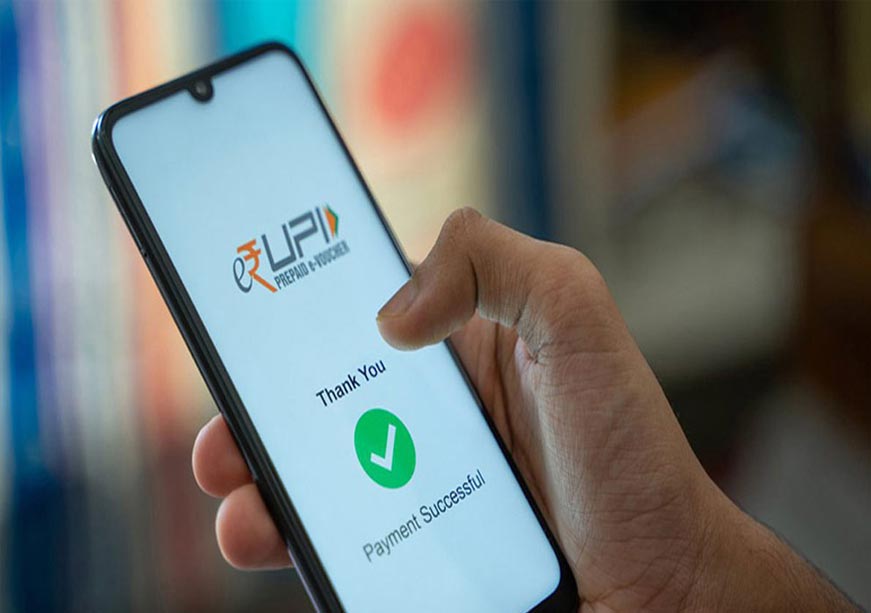Syllabus:
GS3: Inclusive growth and issues arising from it.
Context: According to a recent note by the International Monetary Fund titled Growing Retail Digital Payments: The Value of Interoperability, India has emerged as the global leader in fast payments.
More on the News
- UPI accounts for 85% of all digital transactions in India. Today, UPI processes over 18 billion transactions every month in India.
- The UPI system now serves 491 million individuals and 65 million merchants and connects 675 banks on a single platform, allowing people to make payments easily without worrying about which bank they use.
- In June 2025, UPI processed ₹24.03 lakh crore across 18.39 billion transactions — a 32% jump from 13.88 billion a year earlier.
Unified Payments Interface (UPI)
- Unified Payments Interface (UPI) is a real payment system that enables instant money transfers between bank accounts through a mobile application. It is built on the Immediate Payment Service (IMPS) infrastructure.
- UPI brings multiple bank accounts into a single app and supports various features such as fund transfers, merchant payments, and peer-to-peer payment requests, making digital transactions quick and convenient.
- Interoperability and UPI:
- Interoperability means different systems can work together smoothly.
- In payments, it allows people to send and receive money even if they use different banks or apps.
- For this to happen, all parts of the system must follow common rules.
- These include technical standards so the software works together, clear ways to interpret shared information, and agreed rights and responsibilities for everyone involved.
- Before UPI, digital payments in India were limited by closed-loop systems.
- A closed-loop system is one where transactions can only happen within the same platform. For example, a wallet app allowed transfers between its own users but not to someone using a different wallet.
- Similarly, while people could use IMPS to move money between banks, they could not do so through third-party apps.
- UPI changed this. It connected banks and fintech apps through a common platform.
- Now, a user can pick any UPI-enabled app and pay someone using another app, without worrying about which bank they use.
- This openness has two big benefits.
- First, users have the freedom to choose their favourite app, based on trust or ease of use.
- Second, it creates healthy competition among providers to offer better features and security.

UPI and its global reach
- UPI now accounts for almost 50 per cent of transactions globally. This shows the strength of an open and interoperable system built for speed and simplicity.
- UPI is making its presence felt across borders. It is already live in seven countries, including the UAE, Singapore, Bhutan, Nepal, Sri Lanka, France and Mauritius. Its entry into France is a milestone because it is UPI’s first step into Europe.
- This allows Indians travelling or living there to pay seamlessly without the usual hassles of foreign transactions.
- India is promoting UPI as a standard in the expanded BRICS group, aiming to boost remittances, financial inclusion, and its global standing in digital payments.
Impact of UPI
- Money Anytime, anywhere: No need to stand in queues or wait for bank hours. UPI lets people send or receive money instantly, 24×7, right from their mobile phones.
- One App for All Accounts: Managing money is simpler. People can link all their bank accounts in one app instead of juggling multiple platforms.
- Safe and Quick Payments: With secure two-step authentication, payments happen in seconds without compromising safety.
- Privacy First: Users no longer share sensitive bank details. A simple UPI ID is enough, reducing risks for everyone.
- QR Code Convenience: Paying with UPI is as simple as scanning a QR code. This helps speed up transactions at shops and service points.
- No More Cash-On-Delivery Hassles: Online shopping becomes easier as UPI replaces the need to keep exact change for deliveries.
- Payments for Everything: People can now pay bills, donate, or recharge phones without stepping out of their homes.
- Help Is Just a Tap Away: Any issue with a payment can be reported directly in the app, making grievance redressal easy.
Digital Foundation behind UPI
- Pradhan Mantri Jan Dhan Yojana: Financial inclusion was the first big step. The Jan Dhan scheme opened bank accounts for millions who had never used formal banking before. As of July 9 2025, over 55.83 crore accounts have been created. These accounts give people direct access to government benefits and a safe place to save money.
- Aadhaar and Digital Identity: Aadhaar gives each resident a unique biometric ID, ensuring secure authentication and targeted delivery of services. As of June 30, 2025, over 142 crore Aadhaar cards have been issued, forming the backbone of digital services like UPI.
- Connectivity and the 5G Revolution: India’s rapid 5G rollout, with 4.74 lakh base stations covering nearly all districts, supports 116 crore mobile users. Data costs dropped from ₹308/GB in 2014 to ₹9.34 in 2022, making digital access more widespread and affordable.


